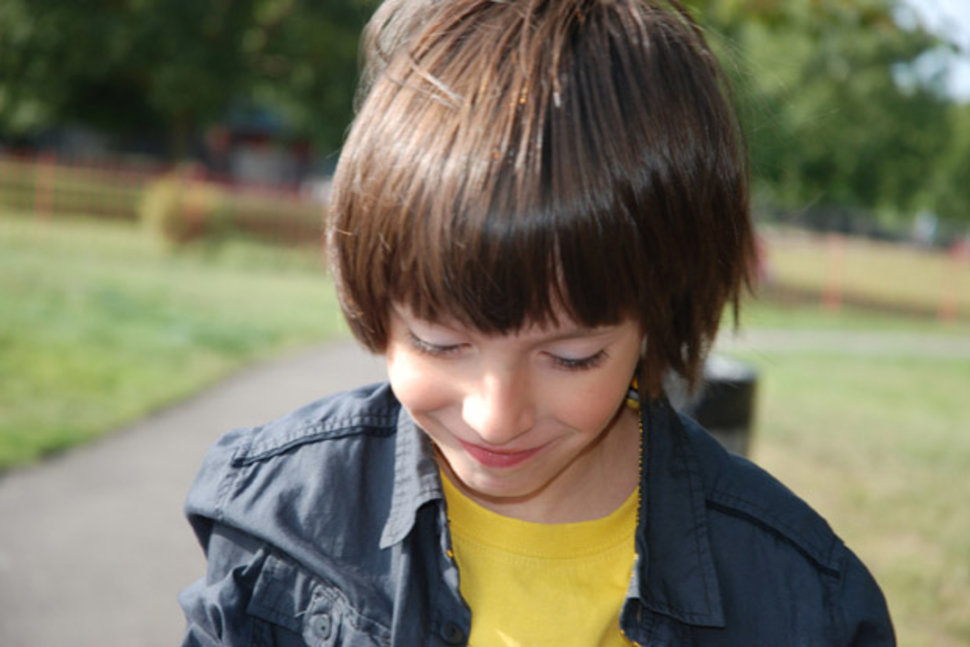April is Autism Awareness Month, and while I’d love to share all the clinical information and research findings available on autism, that feels akin to trying to summarize the entire encyclopedia in one page. Instead, I offer 10 things I wish everyone knew about autism.
I’m a developmental and behavioral pediatrician specializing in autism spectrum disorder, or ASD, based at the Rose F. Kennedy Children’s Evaluation and Rehabilitation Center at Montefiore Health System. My days are filled with patients, families and stories of the challenges and successes of children with autism. But two experiences, not involving my patients, stand out for me.
The first child has been on my mind because of the recent passing of Dr. T. Berry Brazelton, the grandfather of pediatrics. One of my prize possessions is a VCR tape I have of Dr. Brazelton speaking in his hallmark soothing voice to a newborn lying on the warming table, saying: “Baby, look at me if you can hear me.” And the newborn, hours old, turns his head to look at him. And then he does the same things on the other side. It’s an incredible sight that sends chills up my spine every time I see it, and it’s a reminder that babies are born social creatures with interest in their environment.
[See: 12 Questions You Should Ask Your Kids at Dinner.]
The other child I’ve been thinking about was one I saw from afar while at the zoo with my family during a vacation. The child was the central character in a scene I saw play out in front of an extremely impressive fish tank featuring very large, colorful tropical fish swimming very close to the observation window with tremendous dramatic flourish. The tank was the highlight of the exhibit, and many children and adults stood mesmerized before the window. A father holding his approximately 21-month-old toddler caught my eye. While all the other children were fascinated by the beautiful fish, this father tried repeatedly and unsuccessfully to direct his child’s attention to the tank. The boy consistently looked blankly in the other direction. The father turned his own body so the little boy would be facing the tank, and the little boy turned his head seemingly looking anywhere else. I saw the father knocking on the glass (to the chagrin of the guard), pointing repeatedly at the fish while exclaiming to his son. I finally saw him gently take his son’s face and try to turn it toward the tank, but the boy did not register any appreciation of what was before him and quickly looked away. Then I heard the conversation between the father and the mother of this toddler. The father said: “See how all the other children, even babies, are looking at the tank? Their parents can get them to look by pointing. I can’t get him to look at anything. Something is wrong.” To which the wife said: “He’s a baby, you’re crazy.”
As a specialist in infants and toddlers and the earliest signs of autism, the scene was poignant. The father knew something was wrong. I’ll give it a clinical name: He could not get and direct his son’s attention and the toddler could not follow a point. In essence, the toddler didn’t have joint attention. A lack of joint attention is among the earliest signs of autism. Even the newborn baby on the warmer was responsive to language. I shared the father’s concerns. I said nothing.
What I wish I could have told that dad, and what I’m sharing with you now, are important pieces of advice to remember about children with autism:
1. If you’ve seen one child with autism, you’ve seen just that: one child with autism. You cannot generalize your experiences with that one child to all children with autism. The clinical signs, symptoms and needs of children with autism, who represent 1 in every 68 children, are extremely diverse. This is why the term “spectrum” has become part of the condition’s name. A child can have severe signs of classic autism, such as flapping and spinning, and stand out to anyone and everyone as having autism. Or the child can show no outwardly unusual behaviors to the common eye. He (usually it is a “he,” since four boys are affected for every one girl) can be bright, verbal and well-behaved. Or the child could be every combination and permutation in between. What all children with ASD have in common is that they all have social problems that impact on their day-to-day functioning, ranging from a complete lack of social interest, to limited social motivation, to lack of the social “know-how” that other children are born with.
2. We can often diagnose autism reliably by 2 years of age, but the signs can be subtle and require expertise with this age group to recognize. So, despite our ability to diagnose the condition early, many children continue to be diagnosed much later, at 4 to 5 years of age. The little boy above is a perfect example. There was no flapping, spinning, unusual movements or seeming repetitive interests – things that stand out and grab a parent’s attention. Rather, he displayed the negative signs of autism: social and communicative skills he should have but didn’t. He didn’t respond when called, make eye contact or share facial expressions, or point or follow someone else’s point. While these are glaring signs to someone who sees young children with autism all day long, they can be easily missed.
[See: 10 Concerns Parents Have About Their Kids’ Health.]
3. Autism is not caused by bad parenting. Once upon a time, autism was blamed on cold “refrigerator moms” who didn’t nurture their children. All that changed when it was recognized that children with autism are much more likely to have seizures over the course of their lifespan. No amount of non-ideal parenting causes seizures – or causes autism.
4. So what causes autism? Many things: infections (e.g. congenital rubella, herpes), metabolic problems (like those tested on the newborn screen – low thyroid, PKU), substances/medications that a mother takes during pregnancy (e.g. alcohol, certain seizure medications), brain abnormalities (impacting the structure of the brain or the function of the brain, like infantile spasms), and many genetic abnormalities and syndromes. Please note that vaccines are not on that list. What all these causes have in common is that they lead to damage in the brain as a “final common pathway.” The specifics of that pathway are not yet identified.
5. Better outcomes are associated with earlier diagnosis. That generally doesn’t mean a cure. It means better learning and communication skills, fewer behavioral issues, more adaptive/functional skills of independence and less familial stress.
6. At present, the evidence-based treatments for autism are educational/therapy related and not medical. These treatments are most effective when begun early; they’re intensive in nature and based upon behavioral principles. Parents play a critical role in nurturing social interest. As children get older other strategies come into play, including direct teaching of social skills and helping children utilize their cognitive skills to develop social “know-how.”
7. There are no biomedical treatments for the primary social impairment of autism, only some of its peripheral symptoms (such as hyperactivity, anxiety, mood symptoms and sleep problems).
8. There are other conditions that go along with autism. These include early loss of social and language skills, toe walking, intellectual disability, ADHD, sleep problems, gastrointestinal problems and wandering.
9. Above all else, children with autism are children. They’re affected by all the same things as typical children – only they may not have the communication skills to express it. So they may be irritable and throw more tantrums when they have ear infections, dental pain, constipation or with a family move, parental separation or the birth of a sibling. A change in behavior requires a good medical assessment and an investigative mindset.
[See: 6 Dangerous Games Your Kids Should Avoid.]
10. What does the future hold for an individual child with ASD? On my desk at work, I keep a “magic 8 ball” just for when parents ask this very reasonable question. Having practiced over a quarter of a century, I’ve watched the children we diagnosed with ASD as toddlers reach young adulthood. That group includes children who received all of the recommended treatments, who came from loving homes with devoted parents. And just as we started by saying that autism is a broad spectrum, so it is that those children are now a diverse group of young adults. Some remain minimally verbal and can’t live independently, while others are college students, young adults living independently and holding down jobs. And we can’t always predict which path a given child will take – hence the magic 8 ball. But the patterns tied to best outcomes include: greater cognition, more language, less severe social impairment, fewer behavioral issues and more independence and self-care skills over time.
If you remember anything from this post, let it be this: Learn the signs, and act early.


